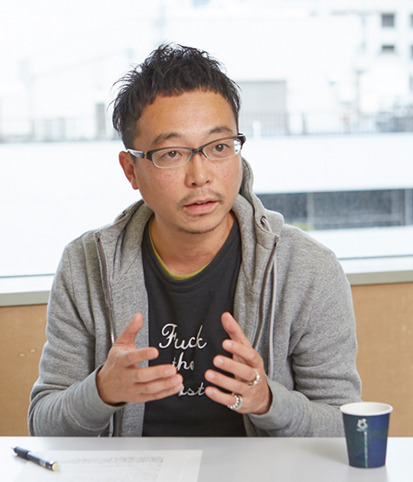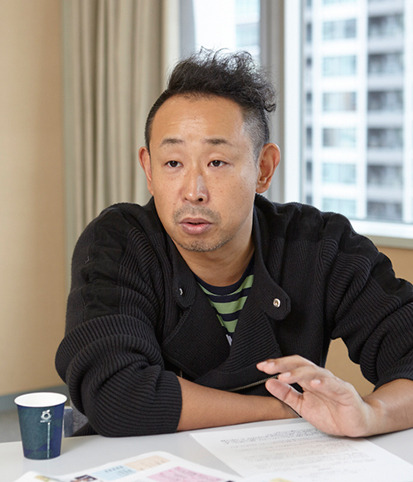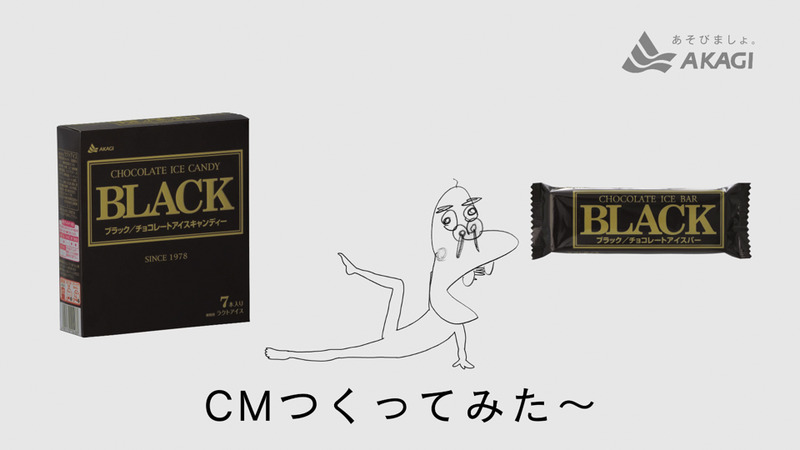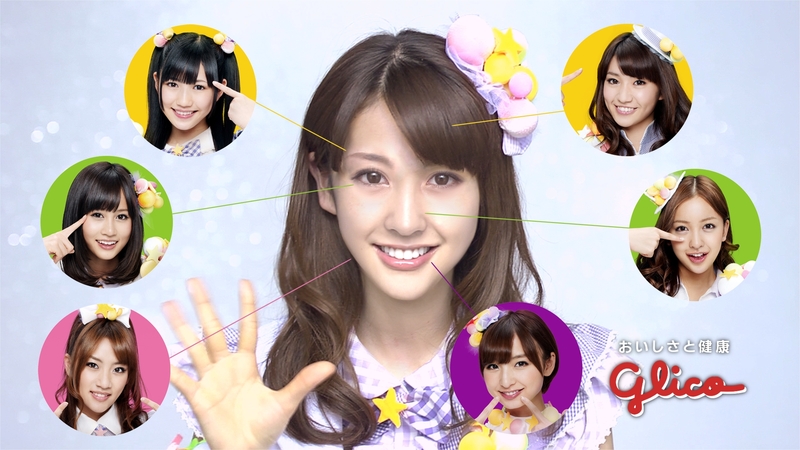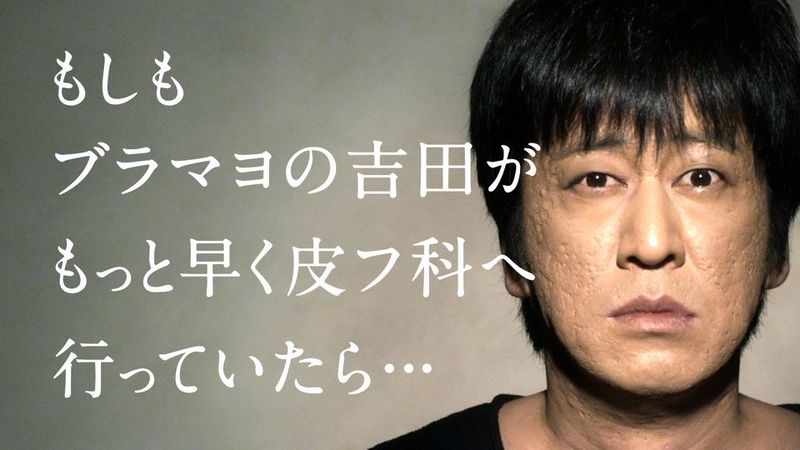Boasting diverse history and culture, Kansai has generated its own unique energy. The advertising and communications field is no exception. The neon signs of Dotonbori have become a famous tourist attraction, renowned both domestically and internationally. Furthermore, it has produced numerous "interesting" commercials, and its power has been recognized by global advertising awards. What is the source of the power behind the advertising Kansai creates? Alongside the voices of creators, we introduce recent topics.

Masayuki Furukawa is known for his breakthrough ideas that make you want to tell others about them. On the other hand, Takanori Nakao creates multidimensional projects combining various media, generating significant buzz. Within Dentsu Inc. Kansai, they lead specially formed teams: "Team Furukawa" and "Team Nakao," collectively known as "Dentsu Inc. Kansai S-Creative" (S-Creative). We asked them about the "interesting" aspects of Kansai creativity and the passion they pour into their work.
Kansai Creativity: Returning to the Roots
──This year, the Osaka Copywriters Club (OCC) saw a complete renewal of its leadership, including Mr. Nakao becoming Vice President. They declared, "'Omoroi' and 'interesting' are different." What was the intention behind this?
Nakao: It's not about rejecting the traditional Kansai spirit. It's just that, somehow, especially among younger creators, the goal became simply to be "Omoroi" as a framework. That's not it. We should be more free and unrestrained. The essence of Kansai-style Omoroi emerged when our distinctive predecessors pursued what they personally deemed "good" without being bound by convention. It's rooted in a challenge spirit—like saying, "Don't tell me it's impossible; let's at least hear it out." So, we've redefined it to ensure we don't lose sight of that origin. We've proposed defining and evaluating ads that stir various human emotions—including Omoroi—as "interesting."
──Furukawa-san, what was your experience like serving as this year's OCC Award jury chair?
Furukawa: What people find "interesting" varies wildly, and this year's judging brought together people who each deeply pursue their own perspective. It became a discussion where we laid bare what we each use as criteria when creating ads or judging them. It was a heated but meaningful judging session. Ultimately, the judging criteria became about selecting what the active creators desperately making things in Kansai find "interesting."
Nakao: When I was a rookie, especially in creative roles, many people specifically wanted to work in Kansai. It was a gathering of people who were a bit different, who thought, "I'm not going to just follow the rules blindly." But in recent years, advertising in Kansai has gradually become more systematic. Among the younger generation, there's a growing tendency that says, "You can't really move Japan without going to Tokyo." That really concerns me.
──I don't think that's true.
Nakao: No, it's not. Not just Japan—even ads that actually come to OCC, or ads involving Dentsu Inc.'s Kansai branch, win global awards at a rate that's like winning the lottery. Just recently, the super laid-back CM for Akagi Dairy's "BLACK," created by Mr. Furukawa, won Bronze in the Film category at both "AdFest" and "Spikes Asia." In fact, with the spread of the web, truly interesting work now attracts global attention regardless of location, and people move. I really wish more people would realize that.
Hints are all around you
──One of OCC's declarations is "We are conscious of the world."
Furukawa: I wasn't aware of that at all (laughs).
Nakao: I get that you weren't consciously thinking about it. I think you were just pursuing what you found interesting. That's the important part, right? While we've become connected to the world wherever we are, I feel uneasy about methodologies like "aiming for the world" or strategies for winning awards. It somehow feels detached from the essence of advertising. Instead, I want to create purely good ads. I want to make something that everyone in Japan finds interesting, and as a result, the whole world ends up laughing. That's the kind of approach I want to take.
Furukawa: You're right. When you aim for awards or praise, or try to imitate someone else, it's hard to give it your all. I've agonized over this a lot and lost my way. Finding your own voice is the hardest part. Speaking globally (laughs)... A senior mentor taught me, "Pursue the local and the minor, and you'll reach the global." If you distill the absurdity of human nature through your own incredibly narrow perspective and boil it down intensely, it might just resonate worldwide...
──Furukawa-san's ads are known for being unforgettable creatives after just one viewing. As you mentioned, do you always think by pushing your own perspective to the limit?
Furukawa: Well... I aspire to be like that, but it's more like I struggle and struggle until I'm left with no other option but that one approach (laughs). What I always keep in mind is a principle drilled into me by my seniors: "No one is trying to see ads." So, to get people to look back, you have to pour almost all your effort into it. Also, I was taught that advertising is about cost-effectiveness. Three views are better than a hundred, or even better, one view that makes someone want to tell others. Thinking that way leads to "impact" or "standing out," and I think everyone keeps searching for their own kind of "impact." But the moment you put it into words, it can feel too grand, and you just freeze up thinking, "Impact, impact... what even is impact?"
Nakao: When a proposal says "This is a very impactful XX," it's usually not that interesting (laughs).
Furukawa: Exactly! It's because we're insecure that we put it into words and say it ourselves (laughs). So, before writing "impact" or anything else, you just have to come up with a concrete idea. This is something I picked up from a senior colleague too: think about things that are unusual for you, or things that would make the people around you laugh if you showed them, or things from your own surroundings. At that point, I feel like the hints are often found in the things you like or are interested in. Personally, I like nonsense, surrealism, and gags, but finding the connection between those elements—which don't really fit with advertising—and the product being advertised, or society itself... it's a real quagmire (laugh). The more you struggle, the deeper you sink...
To make people enjoy something with your own unique ideas
Nakao: Young people and students visiting alumni often ask me about brainstorming techniques or know-how. But in our industry, if you have ten projects, they're all completely different, right?
──So how do you respond when asked about your approach?
Nakao: The only way to come up with interesting ideas is to keep thinking until something interesting pops into your head! (laughs). Lately, when I tell people to think, they immediately start searching online. But searching doesn't expand your own thinking, so it's not really ideal. One thing I can say is that I always use whether I personally find the project fun as my standard. I think the easiest target to win over is yourself. After that, I really think hard about how to make it enjoyable for others.
──Your work often involves multi-dimensional projects like the Ezaki Glico "Ice no Mi Aimi Eguchi Campaign." Is that what you mean by creating enjoyment through such mechanisms?
Nakao: No, it's not about the mechanism first. People say I'm someone who communicates using mechanisms combining mass media and the web, but I think if you have one strong idea, you don't need a mechanism. However, even if I tried to come up with an idea that would be instantly and wildly entertaining like Mr. Furukawa does, I could never match him. The result of fleshing out how to make people thoroughly enjoy something using my own unique ideas is what ends up looking like those projects.
Furukawa: I... end up with pretty weird or loose final forms a lot, so people probably think I'm either winging it or not thinking at all (laughs). But when I start thinking, I always go to actual stores or try the products myself. I seriously agonize every time over what to say to get people to notice or buy. The straightforward approach. After that, I just try out whatever comes to mind. I'm anxious right up until the very end. What if something I thought was interesting turns out to be boring when I actually try it? Or what if something I thought was really great yesterday turns out to be just okay? So I often test things out, like searching online for similar videos to try dubbing over them, or doing test shoots. Even then, there are still moments on set where I think, "Huh?" It makes me break out in a cold sweat. There's just no choice but to prepare as much as possible.
Nakao: If it's not working on set, you need the courage to cut it, right? That's why having a trusting relationship with the client where you can say, "Hey, maybe we should tweak this a bit," is crucial.
Furukawa: That's a big part of our job too. We're really helped by having relationships where they say, "Well, if you put it that way, why not give it a try?" In Kansai, creators like us often talk directly with clients alongside sales, so ideas can come up during on-the-spot discussions. We want to respond to what's requested in any way possible and make them happy. Maybe our service mentality is a bit excessive (laughs).
──Going forward, especially with the advancement of digital technology, corporate communication environments will change. Could you share your outlook for the future, including these changes?
Nakao: From a planning perspective, digital is just one tool among many. We want to use it effectively to maximize enjoyment for each situation. Regarding the environment, it's great that we now have more options to create experiences regardless of location. This opens opportunities for clients in any region. On the flip side, precisely because of this, the quality and appeal of each individual piece of content is being scrutinized more than ever. That's why we can't just rely on the technology; we have to make each piece compelling on its own merits.
Furukawa: I also think cases where digital is used as a solution will increase, but digital alone is still too narrow. For example, older people like my parents, who aren't digitally savvy, probably won't actively seek out trending videos themselves, and it won't reach young children who haven't yet encountered digital media. I think it's becoming about discerning the strengths of TV and the strengths of digital, using them appropriately, or combining them. The TV vs. web debate is already a thing of the past. Now, with the potential for interesting content—including social media—to spread rapidly, I want to explore what becomes possible through the fusion of TV and web.
Furukawa's plum blossom piece, "Nighttime Plum Blossoms." This calculatedly surreal work won the 2010 ACC Grand Prix. He has since produced numerous series featuring songs.
Mr. Furukawa's work for Akagi Dairy's BLACK "It's Not" campaign. It promoted a long-selling product with unique characters, nonsensical songs, and bizarre dances. Sales increased by 250%.
Nakao's work for Ezaki Glico's "Ice no Mi" campaign. It sparked debate over whether the mysterious new member "Eguchi Manami," created by combining AKB48 members' faces, actually existed. It received high praise both domestically and internationally.
Mr. Nakao's work for Shionogi Pharmaceutical's "What If Brama-Yo's Yoshida Had Seen a Dermatologist Sooner..." campaign. Using the same setting as the commercial, it featured a fictional comedy duo and a trendy actor's press conference, receiving coverage across multiple media outlets.





